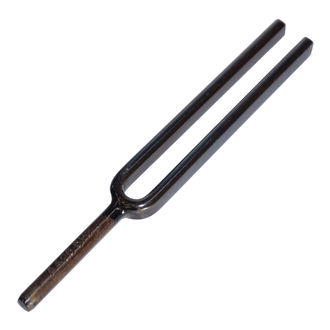

- Blued steel a440 tuning fork manual#
- Blued steel a440 tuning fork professional#
- Blued steel a440 tuning fork free#
Shipping for piano accessories is $5.95 to the continental United States (Alaska, Hawaii and Canada, please email for a shipping quote). The John Walker trademark is a guarantee of accuracy and quality workmanship. John Walker tuning forks have been manufactured for more than 150 years in Sheffield, England by the Ragg family. John Walker Trademark is a guarantee of accuracy and quality workmanship. Jansen Piano Benches John Walker piano tuning forks are the highest quality tuning forks on the market today, manufactured for more than 150 years in Sheffield, England, by the Ragg Family. The tuning forks come in the following octaves: John Walker Piano Tuning Forks - Tempered Blue Steel. World renowned blued stell and chrome plated tuning forks are produced from hardened and tempered steel and tuned to 20 degrees Celcius to achieve pure notes of strong duration. Made from hardened and tempered blued steel with gilt lettering stamped for the note and frequency.
Blued steel a440 tuning fork professional#
Forks vary in length from 5-5/32" to 6-1/2" long, and come in an attractive blue color leatherette case measuring 12-1/2" long x 6-1/2" wide x 1" deep. Professional Piano Tuning Fork John Walker A-440, Gold.
Blued steel a440 tuning fork free#
FREE delivery Sun, Sep 10 on 25 of items shipped by Amazon. This report was followed by a decree dated the 16th of February 1859, fixing for France an official pitch having 870 simple vibrations per second at 15 degrees C., and known by the name of diapason normal or normal (standard) pitch.The complete John Walker Piano Tuning Kit consists of 13 blued steel forks in the temperament octave from C-261.6 to C-523.3 (see below). QIYUN 256 Hz Tuning Fork, 256 Cps Tuning Forks with Fixed Weights, Clinical Grade Nerve/Sensory with Silicone Hammer & Cleaning Cloth. On the 1st February 1859, the Commission handed its report to the Minister of State. Monnais, Gioachino Rossini, and Ambrose Thomas. Made from hardened and tempered blued steel with. Each tuning fork is approximately 5.5 inches long. Note the two most common tuning forks are A-440 (often used with orchestras) and C-523.3.


If you are purchasing a single tuning fork for your piano, we recommend the C-523.3. Halevy, reporter, Daniel Auber, Hector Berlioz, Despretz, Camille Doucet, Lissajous, General Mellinet, Giacomo Meyerbeer, Ed. With proper care, a John Walker tuning fork will last indefinitely. The French commission included the following people: J. The following webpage provides some photos of Lissajous-type tuning forks and a description of some of the acoustic work of Lissajous: Many musicians and non-musicians alike vehemently oppose the industry standard of 440 Hz as a reference for tuning. In this document there is a long section on the French decree of 1859, whose authors endeavored to establish a uniform pitch in France of A435, later known as “International pitch.” The French physicist Jules Antoine Lissajous had observed in 1855 that, “…the pitch varies not only from town to town and country, but it changes in one country and in one theatre from year to year.” Martin, published by Leon Pinet and Co., a major supplier of tools and supplies for these instruments since 1840.
Blued steel a440 tuning fork manual#
“Universal Low Pitch”: A440.Ī Practical Manual for the Piano and Harmonium Tuner was written by E. It was common to tune very high A between the 1860s until the turn of the twentieth century, in the U.S. The Wittner tuning forks have enjoyed an excellent reputation for decades because they have an excellent, pure sound. The comprehensive 357-page American Felt Company catalog for 1911 has a number of forks available both in traditional polished steel as well as the new “blued” forks (to prevent rust) between a low pitch of A435 and a high pitch of A454. In the 1885 Hammacher Schlemmer catalog, both A and C forks are offered for sale, but curiously, no pitches are given for either: The diversity of musical pitch was perhaps even greater in the nineteenth century, however, and varied between A423 and 457. Since 1939, there has been a concerted effort to establish A440 as the universal standard pitch, and A440 has gained considerable acceptance over the years, but even so, pitch has ranged from A415 for some early music ensembles, to A444 for some orchestras. Throughout recorded history, and to the present day, there has been no universally predominant standard musical pitch.


 0 kommentar(er)
0 kommentar(er)
